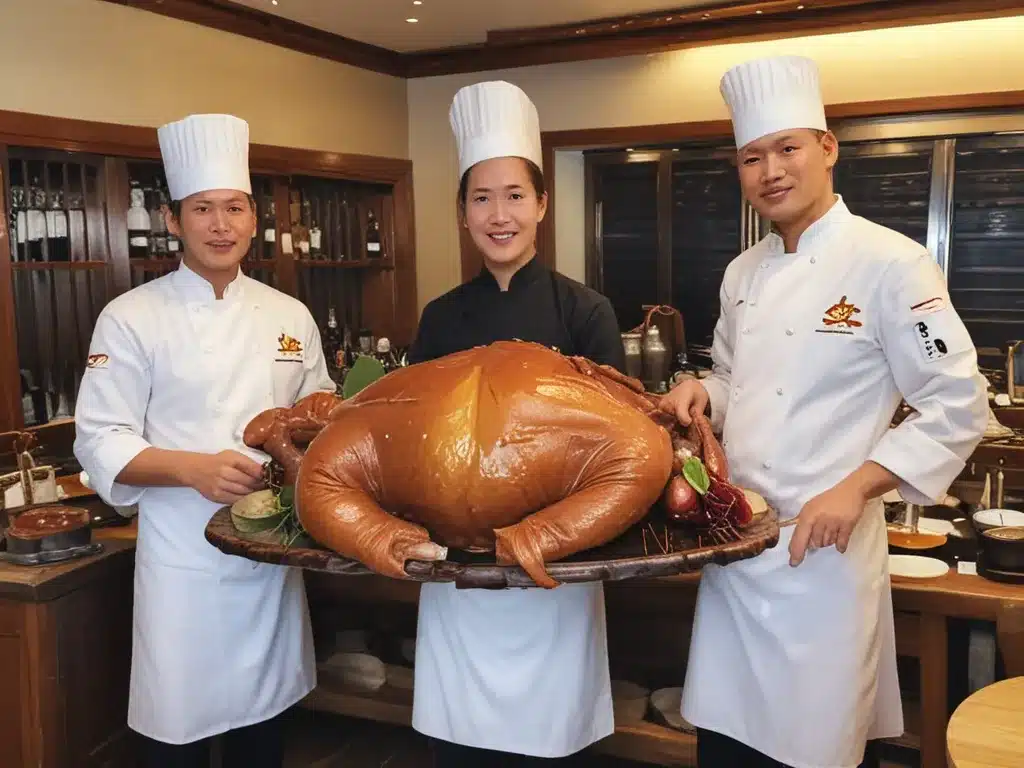
Peking duck is a signature Chinese dish that is enjoyed throughout the world. As the head chef of a renowned Peking duck restaurant in Beijing, I have spent years perfecting my craft and learning the history behind this culinary masterpiece. In this article, I will provide an in-depth look at the ingredients, cooking process, and cultural significance of Peking duck.
The History of Peking Duck
Peking duck has its origins in the Tang dynasty over 1,000 years ago. According to historical records, the emperors of the Tang dynasty loved to eat roasted duck, giving this dish royal status. However, it was during the Ming dynasty that Peking duck truly emerged as a iconic Chinese culinary specialty. The dish became popular in Beijing in the 1500s when the royals began enjoying whole roasted duck on a regular basis.
In the late 1800s, chefs at Quanjude Restaurant took the tradition of roasting duck to new heights. Through experimentation, they perfected the process of cooking the duck over fruit wood to ensure crisp skin and juicy meat. Their mastery of this cooking technique established Quanjude as the top restaurant for Peking duck in China. Ever since, chefs across Beijing have strived to replicate the succulent texture and flavor profile that Quanjude achieved.
Preparing the Perfect Peking Duck
Creating a perfect Peking duck is an art that requires immense culinary skill. The ducks we use are of the Pekin breed and are grown specifically for this dish. Before roasting, I carefully prep the duck through a multi-step process.
First, I baste the skin of the duck all over with a marinade containing hoisin sauce, molasses and spice. This imbues the skin with a sweet and savory flavor. Next, I hang the ducks in an oven to dry out overnight. The drying helps render the fat just below the skin which results in ultracrisp skin once cooked.
On the day it is roasted, the duck is placed in front of a wood fire rotisserie. It takes me approximately 1-2 hours of slow roasting at a low temperature of 150°C to achieve flawless results. The combination of radiant heat and fat rendered from hanging overnight makes for irresistibly crunchy skin. Some chefs even massage the skin periodically during cooking for extra crunch.
Once perfectly roasted, I allow the duck to rest for 20 minutes before the entire bird is hung to dry and crisp the skin to a shiny crackle. At this point, guests can enjoy slices of the succulent meat served with duck pancakes, scallions and hoisin sauce.
The Cultural Significance of Peking Duck
Beyond its incredible flavors, Peking duck holds deep cultural significance for the Chinese. It represents prosperity, luxury, and celebrations of all kinds – something I am proud to share with visitors from around the world.
Growing up, all special occasions like birthdays, holidays and festivals were incomplete without a feast of Peking duck. Even today families will order the dish for important dinners and gatherings. The role it plays in welcoming guests and bringing people together over a communal meal makes it a true symbol of Chinese hospitality.
Peking duck also features prominently in Chinese arts, literature and stories that have been passed down through generations. References to the dish appear in ancient poems and folktales that highlight its popularity even centuries ago. More recently, it has inspired art forms like paintings paying homage to Beijing’s signature food.
How to Enjoy Peking Duck
Mastering the cooking method is just half the picture – the other half is having guests properly enjoy this treasured delicacy. Here are the steps I teach for the authentic Peking duck dining experience:
| Step | Action |
|---|---|
| 1 | Slice the crisp skin and meat paper thin using a sharp knife. |
| 2 | Spread hoisin sauce thinly onto a steamed pancake. |
| 3 | Add diced scallions on top of the hoisin. |
| 4 | Layer on a few slices of duck meat and crispy skin. |
| 5 | Wrap the pancake and eat in one swift motion, savoring the blend of flavors. |
I recommend repeating this process a few times when eating Peking duck to truly taste all the components together – the savory meat, the crackling skin and the sweet yet spicy hoisin sauce. With each bite, you dive deep into the royal history and traditions that make this dish so special to Chinese cuisine and culture.






